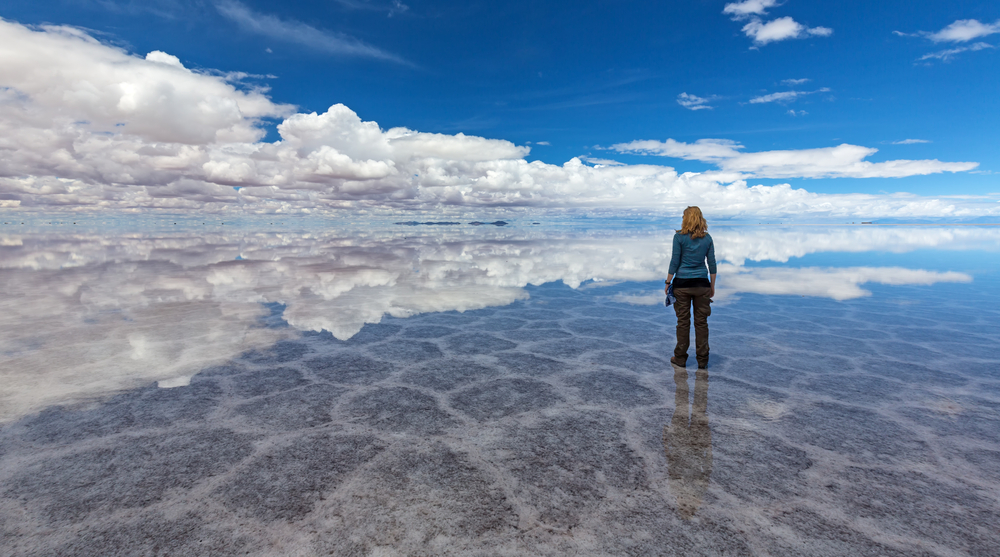In the heart of the Bolivian Altiplano lies one of the most extraordinary natural wonders on Earth: Salar de Uyuni. This expansive salt flat, covering over 10,000 square kilometers, is the largest of its kind in the world. Located in southwest Bolivia, near the crest of the Andes, Salar de Uyuni features a landscape that seems otherworldly, particularly when a thin layer of water transforms the desert into a massive mirror, reflecting the sky and creating mesmerizing vistas.

Salar de Uyuni, Bolivia
Salar de Uyuni’s origins date back to prehistoric times. Around 40,000 years ago, the area was part of a giant prehistoric lake. As the lake dried up over millennia, it left behind two smaller lakes, Poopó and Uru Uru, and two major salt deserts, Salar de Coipasa and Salar de Uyuni. The latter is the larger and more famous of the two, now hosting an estimated 10 billion tons of salt.
The salt flat is not just a geological wonder; it’s also a significant part of the region’s history and culture. Indigenous communities, such as the Aymara, have inhabited this area for centuries, relying on the salt and the singular ecosystem for their livelihoods. The salt flats have long been a source of economic activity, with salt extraction continuing to be a vital industry for the local people. Additionally, Salar de Uyuni is rich in lithium, a critical component in batteries, making it an important resource in the global technology market.

Salar de Uyuni, Bolivia
Getting to Salar de Uyuni is an adventure in itself. Most visitors start their journey in the town of Uyuni, which can be reached by a short flight from La Paz, Bolivia’s capital. There are also train and bus services connecting Uyuni with other major cities in Bolivia and neighboring countries. Once in Uyuni, travelers typically join guided tours to explore the salt flats. These tours range from one-day excursions to multi-day adventures, often including visits to other remarkable sites such as the Eduardo Avaroa National Park, the Train Cemetery, and the stunning Laguna Colorada.

The visitor experience at Salar de Uyuni is nothing short of magical. During the dry season, from May to November, the salt flat is a vast, white expanse that seems to stretch infinitely under the bright blue sky. This is the perfect time for those iconic forced-perspective photos, in which the flat horizon creates optical illusions.
In contrast, the wet season, from December to April, brings rain that creates a thin layer of water on the surface. This natural mirror effect turns the salt flat into a breathtakingly surreal landscape where the sky and ground merge, making it a favorite among photographers and nature enthusiasts alike.
Visitors can also stay in distinctive accommodations like the salt hotels, constructed entirely from blocks of salt, offering an unforgettable experience. These hotels provide a comfortable base for exploring the salt flats and enjoying the remarkable sunsets and starry nights that Salar de Uyuni is famous for. The area’s remote location means there’s minimal light pollution, allowing for some of the clearest night skies on the planet.
You Might Also Enjoy: Offbeat Travel: The Hand of the Desert in Chile
Salar de Uyuni is a place of stark beauty and immense significance. From its prehistoric origins and cultural heritage to its role in modern industry and tourism, it offers an unforgettable experience for those willing to venture into the heart of Bolivia’s Altiplano. Whether you’re drawn by the science, the scenery, or the serenity, a visit to Salar de Uyuni is sure to be a highlight of any traveler’s journey.
Have you ever visited the salt flats of Salar de Uyuni? Tell us about it in the comments below!


Leave a Reply